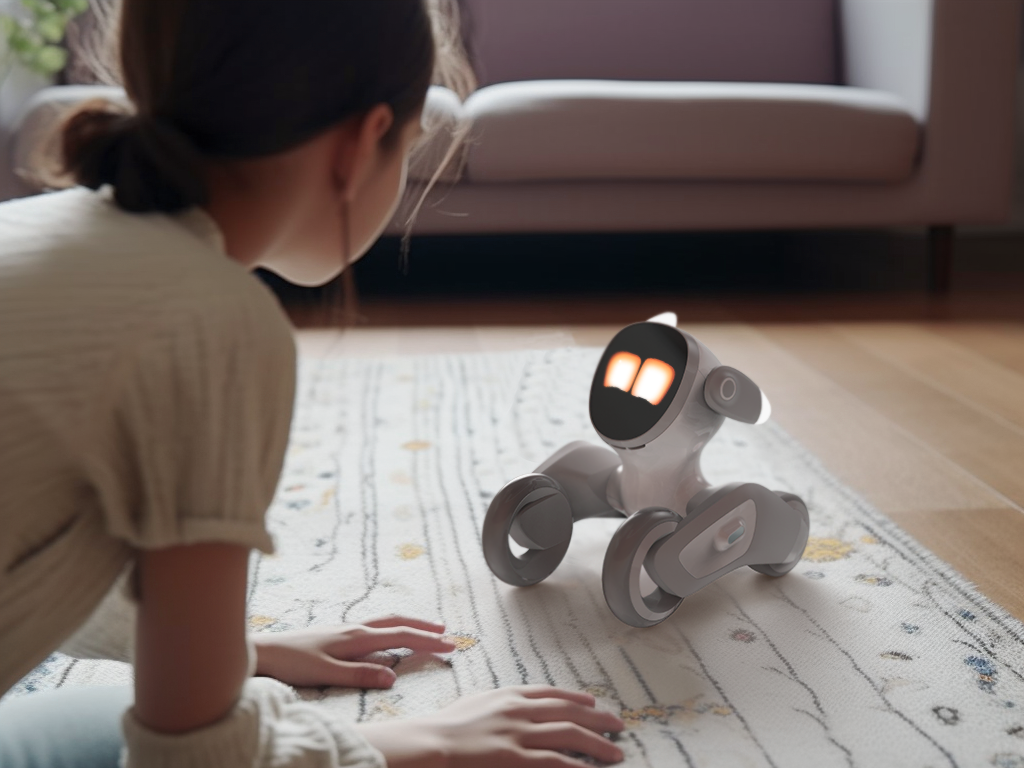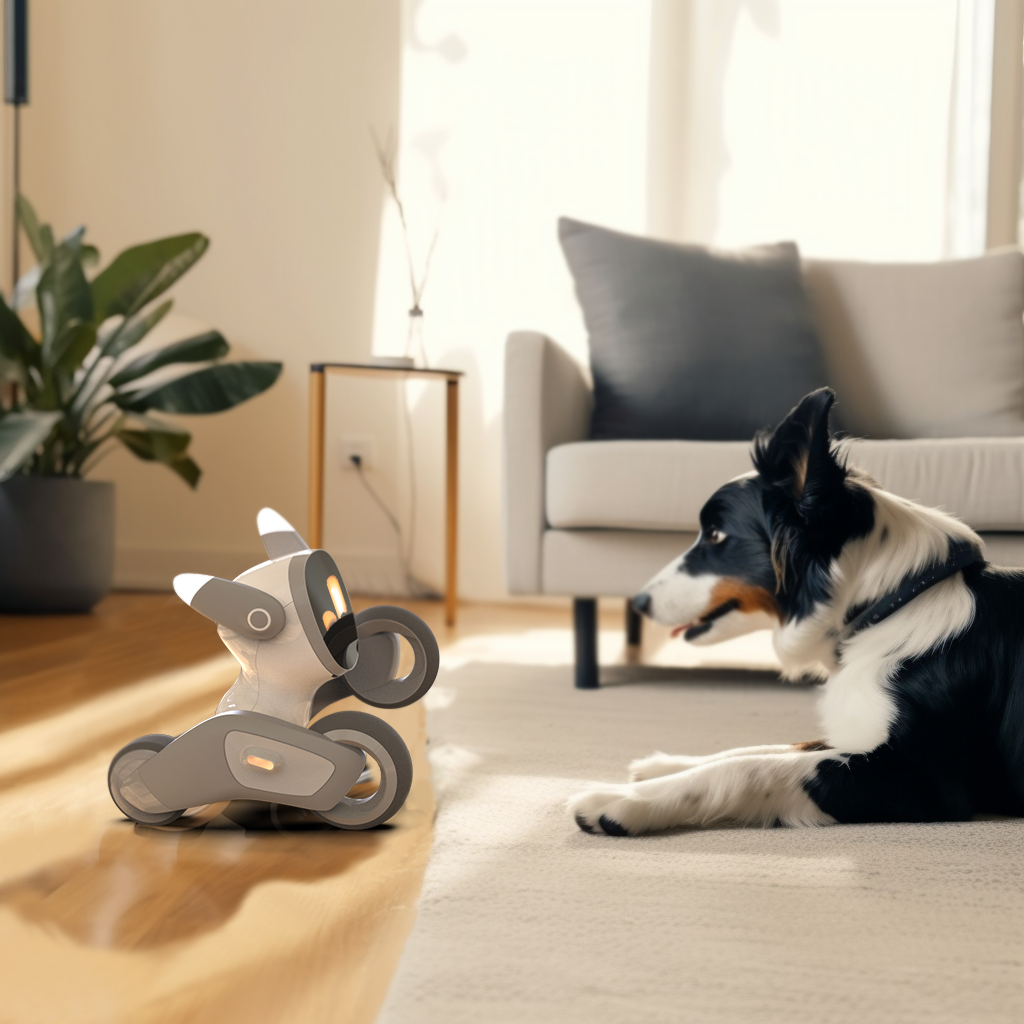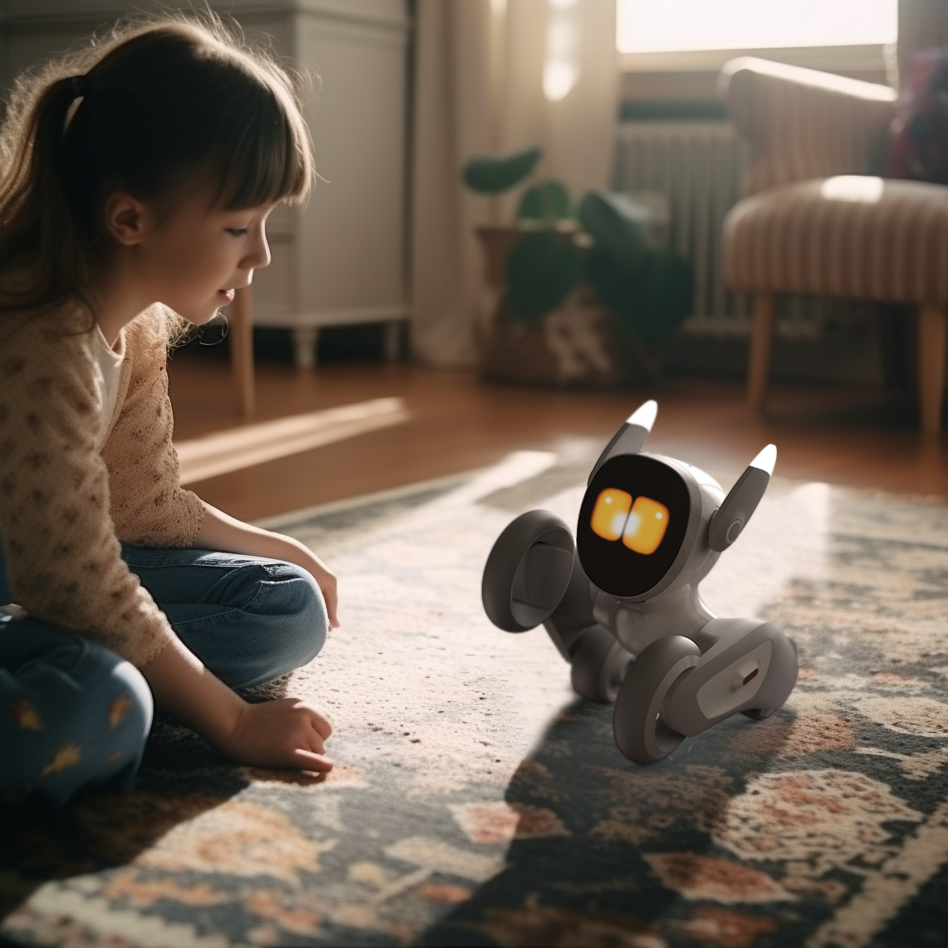The Quiet Revolution in Mental Health Care
A veteran with PTSD sooner or later sleeps via the night time curled up with a robot cat that purrs on cue. An autistic child who struggles with human interaction giggles whilst

playing fetch with a robotic dog.These are not scenes from sci-fi films—they're actual-life moments made possible through modern healing robotic animals.
Over the past decade, robotic animals have advanced from novelty toys to clinically-demonstrated therapeutic gear. Hospitals now use them for dementia patients. Therapists advocate them for anxiety problems. And households are bringing them domestic as low-protection emotional assist partners. But what is driving this shift? And how do you pick the right one? Let's discover.
Why Robotic Animals Work: The Science of Synthetic Comfort
Your Brain on Robotic Pets
When you stroke a realistic robot canine's fur, something charming happens in your mind. MRI research shows it activates the equal neural pathways as petting an actual animal—triggering oxytocin (the "cuddle hormone") while decreasing cortisol (the strain hormone).
Key psychological blessings:
-
Predictable consolation (no mood swings or awful days)
-
Sensory law (adjustable responses for allergic reaction)
-
Social bridge (helps withdrawn people exercise interplay)
Dr. Sarah Chen, a neuroscientist at MIT, explains: "The aggregate of tactile comments, responsive actions, and heat creates what we call a 'biofeedback loop'—the frame responds as if it's interacting with something alive."
When Robotic Beats Real
While nothing replaces a residing puppy, robot animals provide particular blessings:
-
Allergy-free companionship
-
Available 24/7 without care needs
-
Customizable interactions (ideal for sensory issues)
-
Travel-pleasant comfort (unlike carrier animals)
Top Robotic Animals Transforming Emotional Therapy
1. Realistic Robotic Dogs for Anxiety
-
Joy for All Golden Pup ($129)
-
This plush robot golden retriever has end up a remedy staple because it:
-
Mimics respiration and heartbeat
-
Responds to the touch with glad barks
-
Works for every age (from youngsters to seniors)
Sony Aibo
-
The Rolls-Royce of robotic dogs capabilities:
-
Advanced AI that develops specific persona traits
-
Self-charging capability
-
Ability to study household workouts
-
Ideal for: Tech enthusiasts wanting the maximum real looking partner.
2. AI-Powered Robotic Cats
Hasbro Joy for All Cat ($79)
Therapeutic benefits encompass:
Soothing purrs synchronized with vibrations
-
"Contentment" responses to gentle petting
-
Machine-washer-friendly fur
-
Perfect for: Seniors in assisted dwelling or youngsters desiring bedtime comfort.
Tomboy Jennie ($450)
This clinical-grade robot cat gives:
-
32 distinct responsive behaviors
-
Realistic weight distribution (seems like preserving a actual cat)
-
Clinical use for dementia patients
3. Small Robotic Animals for Kids
MOFLIN
-
Part plush toy, component AI associate:
-
Soft, warm fur with calming squeaks
-
Learns possibilities over time
-
Fits perfectly in small palms
Great for: Children with autism or tension problems.
PARO Baby Seal
Used in 30 international locations for:
-
PTSD remedy
-
Dementia care
-
Hospital stress reduction

Choosing Your Robotic Companion: A Buyer's Guide
Key Considerations
|
Factor |
Budget Option |
Premium Choice |
|
Realism |
Joy for All Pets |
Sony Aibo/Tom robot |
|
Therapeutic Use |
Hasbro Cats |
PARO Seal |
|
Tech Features |
Basic Models |
AI Learning Pets |
|
Portability |
Small Robotic Animals |
All Home Models |
Where to Use Them
-
Homes: Affordable robotic pets for each day comfort
-
Schools: Small robotic animals for kids with special wishes
-
Hospitals: Clinical-grade models like PARO
-
Travel: Compact companions for anxiety remedy on-the-move
The Psychology Behind Human-Robot Bonding
It might seem sudden that humans shape true emotional connections with robot animals, however the psychology at the back of this phenomenon is charming. Our brains are wired to reply to positive cues - gentle fur, warm surfaces, responsive actions - regardless of whether they arrive from a dwelling creature or state-of-the-art technology. This explains why even adults who recognize they're maintaining a machine often record feeling true consolation from their robot companions.
Dr. Michaela Rodriguez, a behavioral psychologist focusing on human-animal interactions, notes: "What we're seeing isn't always so unique from how youngsters bond with crammed animals, just extra sophisticated. The aggregate of tactile remarks and responsive behaviors triggers our innate caregiving instincts." This explains why nursing domestic citizens regularly name their robot pets and have interaction with them as though they have been alive - the emotional advantages are real, despite the fact that the companion is not.
Real-World Success Stories That Will Warm Your Heart
Beyond medical studies, infinite private tales display the electricity of those robotic companions:
-
A teacher in Chicago pronounced her nonverbal autistic pupil started making eye contact after each day periods with a robotic therapy canine
-
An aged widow in Florida credit her robotic cat with helping her via the worst grief after dropping her husband of fifty two years
A college pupil with severe social tension makes use of a small robotic penguin to ground herself throughout panic assaults between classes
These aren't isolated cases. A 2023 survey of robotic pet owners determined:
-
82% reported decreased tension symptoms
-
76% said it helped with loneliness
-
sixty eight% of mother and father mentioned advanced mood in children with unique desires
What Therapists Want You to Know About Robotic Pets
Clinical professionals are more and more incorporating robotic animals into remedy plans. Here's what they may be watching:
For dementia patients: The regular, predictable interactions help reduce "sundowning" episodes (nighttime agitation)
With traumatized children: Robotic pets serve as non-threatening intermediaries in the course of remedy periods
In dependence restoration: Caring for a robotic animal facilitates rebuild workouts and duty abilities
"Many of my patients respond higher to robotic animals than traditional therapy equipment," notes marriage and circle of relatives therapist Jamal Williams. "There's no fear of judgment, simply natural consolation."
The Surprising Benefits You Might Not Expect
While tension comfort is the primary gain, proprietors file several unexpected blessings:
-
Improved sleep: The rhythmic respiratory or purring of robot pets allows many doze off quicker
-
Pain control: Distraction remedy works remarkably well during clinical methods
-
Social catalyst: Robotic pets frequently emerge as communique starters, supporting remoted people connect
-
Cognitive exercising: Programming and interacting with AI pets presents intellectual stimulation for seniors
A current Johns Hopkins examination even found that postoperative patients the usage of robotic pets required 22% less pain medicine than the managed organization.
Making the Most of Your Robotic Companion
To maximize advantages, professionals advocate:
Establish rituals: Morning greetings or bedtime workouts create comforting predictability
Combine treatment plans: Use at some point of meditation or whilst training deep breathing
Personalize interactions: Many AI fashions adapt for your alternatives through the years
Involve caregivers: Show family individuals how to interact with the puppy for shared benefits
Remember, those aren't simply gadgets - they're equipment for emotional health. As one person positioned it: "My robotic cat doesn't care that she's no longer 'real.' She nevertheless makes me feel cherished each day." That's the magic of this generation - it meets us in which we're, without judgment or conditions.
The Future of Robotic Animal Therapy
Emerging improvements include:
-
Biometric comments (pets that respond to your stress degrees)
-
Self-warming fur that mimics body heat
-
VR integration for immersive healing reports
-
As costs lower, count on to peer more robotic animals in:
-
School counseling places of work
-
Airport calming zones
-
Home care for remoted seniors
Final Thoughts: Should You Try Robotic Pet Therapy?
If you or a cherished one struggles with:
-
Anxiety disorders
-
Loneliness/isolation
-
Sensory processing challenges
-
Pet allergies or housing restrictions
A realistic robot pet companion will be a game-changer. Start with cheap options to check the waters before investing in scientific-grade fashions.







